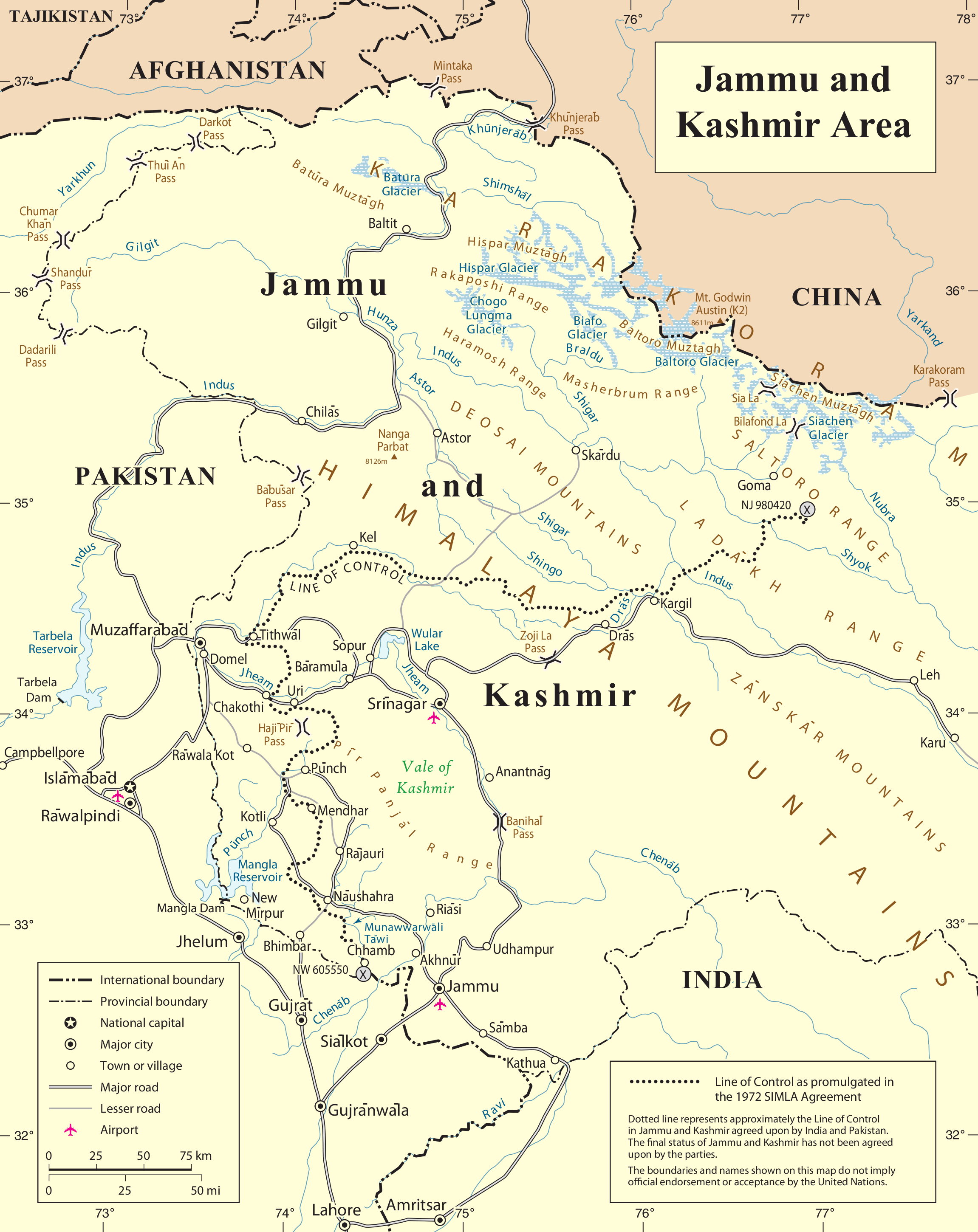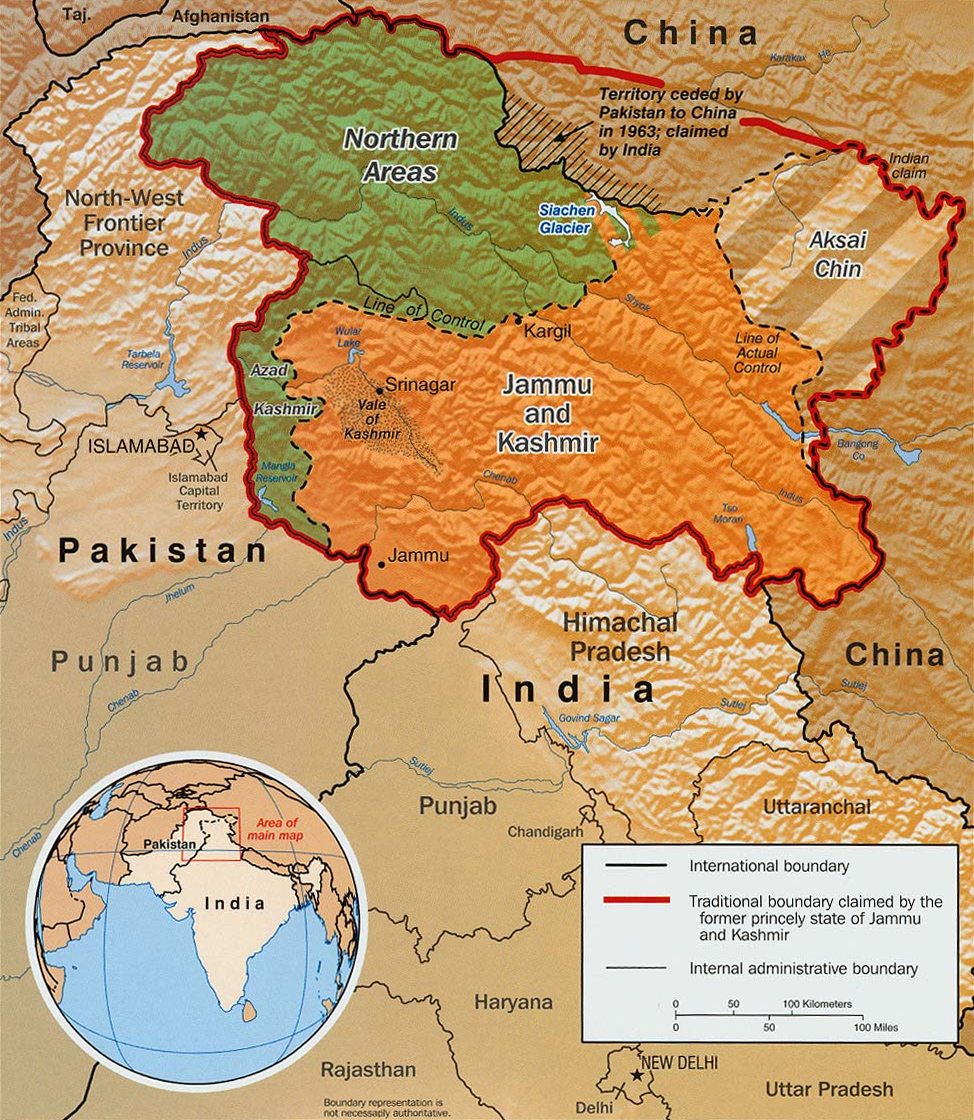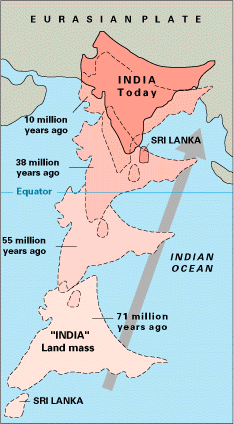|
Saspol Caves
Saspol Caves ( Gon-Nila-Phuk Cave Temples) are situated in the hills behind Saspol, Ladakh, India, which is about 76 km from the city centre of Leh. Paintings exist in five caves, two of them extensively damaged. One of the painted caves, that have been given a coat of lime wash and red paint in the exterior is the most visited and is considered as the main cave. The paintings of Anuttarayoga Tantra (also known as Yoganiruttaratantra) in the main cave are very rare for the period of execution. These caves are under the administration of Likir Monastery. Dating the era Very few early painted cave temples exist in Ladakh and these paintings date to the late 14th/15th century CE. Preservation status The caves, also known as Gon-Nila-Phuk Cave temples, are in danger of total collapse and were therefore listed in 2016 World Monuments Watch. Rammed earth fortifications can be seen on top of the hill near the caves. Conservation Art and architectural conservation proje ... [...More Info...] [...Related Items...] OR: [Wikipedia] [Google] [Baidu] |
Leh District
Leh district is a district in the union territory of Ladakh, India. With an area of 45,110 ''km''''2'', it is the second largest district in the country smaller only to Kutch. It is bounded on the north by Gilgit-Baltistan's Kharmang and Ghanche districts and Xinjiang's Kashgar Prefecture and Hotan Prefecture linked via the historic Karakoram Pass. It has Aksai Chin and Tibet are to the east, Kargil district to the west, and Lahul and Spiti to the south. The district headquarters is in Leh. It lies between 32 to 36 degree north latitude and 75 to 80 degree east longitude. The whole of Ladakh was under the administration of Leh until 1 July 1979, when the Kargil and Leh administrative districts were created. Religion has been a source of grievances between Buddhists and Muslims since the late 20th century and was a contributor to this division. In 2017, the district was declared a tobacco-free zone. The Directorate of Health Services Kashmir under the National Tobacco C ... [...More Info...] [...Related Items...] OR: [Wikipedia] [Google] [Baidu] |
India-China Border Roads
India-China Border Roads (ICBRs, ICB Roads) is a Government of India project for developing infrastructure along the Sino-Indian border by constructing strategic roads, including bridges and tunnels. The ICBR project is largely in response to Chinese infrastructure development along the borderlands with India. As of May 2021, India is constructing at least 177 roads in two phases of over total length along its Line of Actual Control (LAC) with China under the "Border Infrastructure and Management Fund" (BIMF) of Ministry of Home Affairs. This includes 73 roads of length under ICBR-I (Phase-I) approved in 2005 and additional 104 roads of more than length under ICBR-II (Phase-II) approved in 2020. India has set up an inter-departmental "Empowered Committee" (EC) headed by the Ministry of Defence to expedite the issue resolution and timely completion of ICBR infrastructure after the delay in forest/wildlife clearance and land acquisition, rugged terrain, limited working season ... [...More Info...] [...Related Items...] OR: [Wikipedia] [Google] [Baidu] |
Siachen Conflict
The Siachen conflict, sometimes referred to as the Siachen Glacier conflict or the Siachen War, was a military conflict between India and Pakistan over the disputed Siachen Glacier region in Kashmir. The conflict was started in 1984 by India's successful capture of the Siachen Glacier as part of Operation Meghdoot, and continued with Operation Rajiv in 1987. India took control of the Siachen Glacier and its tributary glaciers, as well as all the main passes and heights of the Saltoro Ridge immediately west of the glacier, including Sia La, Bilafond La, and Gyong La. Pakistan controls the glacial valleys immediately west of the Saltoro Ridge. A cease-fire went into effect in 2003, but both sides maintain a heavy military presence in the area. The conflict has resulted in thousands of deaths, mostly due to natural hazards. External commentators of have characterized it as pointless, given the perceived uselessness of the territory, and indicative of bitter stubbornness on both ... [...More Info...] [...Related Items...] OR: [Wikipedia] [Google] [Baidu] |
Indo-Pakistani Wars And Conflicts
Since the Partition of India, Partition of British India in 1947 and subsequent creation of the dominions of Dominion of India, India and Dominion of Pakistan, Pakistan, the two countries have been involved in a number of wars, conflicts, and military standoffs. A long-running Kashmir conflict, dispute over Kashmir and State-sponsored terrorism, cross-border terrorism have been the predominant cause of conflict between the two states, with the exception of the Indo-Pakistani War of 1971, which occurred as a direct result of hostilities stemming from the Bangladesh Liberation War in erstwhile East Pakistan (now Bangladesh). Background The Partition of India came about in the aftermath of World War II, when both Great Britain and British India were dealing with the economic stresses caused by the war and its demobilisation. It was the intention of those who wished for a Muslim state to come from British India to have a clean partition between independent and equal "Pakistan" a ... [...More Info...] [...Related Items...] OR: [Wikipedia] [Google] [Baidu] |
Sino-Indian War
The Sino-Indian War took place between China and India from October to November 1962, as a major flare-up of the Sino-Indian border dispute. There had been a series of violent border skirmishes between the two countries after the 1959 Tibetan uprising, when India granted asylum to the Dalai Lama. Chinese military action grew increasingly aggressive after India rejected proposed Chinese diplomatic settlements throughout 1960–1962, with China re-commencing previously-banned "forward patrols" in Ladakh after 30 April 1962. Amidst the Cuban Missile Crisis, China abandoned all attempts towards a peaceful resolution on 20 October 1962, invading disputed territory along the border in Ladakh and across the McMahon Line in the northeastern frontier. Chinese troops pushed back Indian forces in both theatres, capturing all of their claimed territory in the western theatre and the Tawang Tract in the eastern theatre. The conflict ended when China unilaterally declared a ceasefire o ... [...More Info...] [...Related Items...] OR: [Wikipedia] [Google] [Baidu] |
Line Of Control
The Line of Control (LoC) is a military control line between the Indian and Pakistanicontrolled parts of the former princely state of Jammu and Kashmir—a line which does not constitute a legally recognized international boundary, but serves as the de facto border. It was established as part of the Simla Agreement at the end of the Indo-Pakistani War of 1971. Both nations agreed to rename the ceasefire line as the "Line of Control" and pledged to respect it without prejudice to their respective positions. Apart from minor details, the line is roughly the same as the original 1949 cease-fire line. The part of the former princely state under Indian control is divided into the union territories of Jammu and Kashmir and Ladakh. The Pakistani-controlled section is divided into Azad Kashmir and Gilgit–Baltistan. The northernmost point of the Line of Control is known as NJ9842, beyond which lies the Siachen Glacier, which became a bone of contention in 1984. To the south of the ... [...More Info...] [...Related Items...] OR: [Wikipedia] [Google] [Baidu] |
Line Of Actual Control
The Line of Actual Control (LAC), in the context of the Sino-Indian border dispute, is a notional demarcation lineAnanth KrishnanLine of Actual Control , India-China: the line of actual contest, 13 June 2020: "In contrast, the alignment of the LAC has never been agreed upon, and it is has neither been delineated nor demarcated. There is no official map in the public domain that depicts the LAC. It can best be thought of as an idea, reflecting the territories that are, at present, under the control of each side, pending a resolution of the boundary dispute." that separates Indian-controlled territory from Chinese-controlled territory. The concept was introduced by Chinese premier Zhou Enlai in a 1959 letter to Jawaharlal Nehru as the "line up to which each side exercises actual control", but rejected by Nehru as being incoherent. Subsequently the term came to refer to the line formed after the 1962 Sino-Indian War. The LAC is different from the borders claimed by each c ... [...More Info...] [...Related Items...] OR: [Wikipedia] [Google] [Baidu] |
Actual Ground Position Line
The Actual Ground Position Line (AGPL) divides current positions of Indian and Pakistani military posts and troops across the entire long front line in the disputed region of Siachen Glacier. AGPL generally runs along the Saltoro Mountains range, beginning from the northernmost point of the (LOC) at Point NJ 9842 and ending in the north on the Indira Ridge at the India-China-Pakistan LAC tripoint near Sia Kangri about northwest of Indira Col West, with peaks in excess of and temperatures ranging to around . India gained control of of disputed territory in 1984 because of its military operations in Siachen. A cease-fire was announced in 2003. India has at least 108 forward military outposts and artillery observation posts in this area where temperature goes down to during winters with icy 300 km/h () blizzards. Bana Top () is the highest post and requires an trek that takes up to 20 days for troops to reach. Pahalwan Post (), and Indira Col (), are other high posts. Ind ... [...More Info...] [...Related Items...] OR: [Wikipedia] [Google] [Baidu] |
Siachen Base Camp (India)
Siachen Base Camp, 12,000 feet above sea level at Partapur, is a base camp of 102 Infantry Brigade (Siachen brigade) of XIV Corps of Indian Army which protects 110 km long Actual Ground Position Line (AGPL) with at least 108 forward military outposts and artillery observation posts in the disputed region of Siachen Glacier in Ladakh Union Territory of India. It is approximately 6 hours drive north from the town of Leh via one of the highest vehicle-accessible passes in the world, Khardung La at 17,582 feet. Bana Top (20,500 ft) is the highest post in the region, an 80 km and 20 day trek for troops. Pahalwan Post (about 20,000 ft) and posts near Indira Col (about 19,000 ft) are other high posts. Kumar Post or Kumar Base, which serves as the battalion head quarter, is named after the Colonel Narendra "Bull" Kumar and it is 60 km from the Siachen base towards Indira Col. The Siachen brigade consists of five to eight battalions of Ladakh Scouts supported by artillery, air defenc ... [...More Info...] [...Related Items...] OR: [Wikipedia] [Google] [Baidu] |
List Of Districts Of Ladakh
The Indian union territory of Ladakh consists of two districts. Each district elects an autonomous district council. Until 31 October 2019, these districts were part of the former state of Jammu and Kashmir. List * Indicates area under the actual control of India. Proposed new districts Demands have been raised for the creation of new districts in Ladakh. There had been 9 proposals to make districts. local BJP unit has hinted the creation of two new districts: Nubra and Zanskar. The Ladakh Buddhist Association Zanskar (LBAZ) has also been demanding the creation of Zanskar district. * Nubra: Demands have been raised and the BJP has hinted at the creation of Nubra and Zanskar as new districts. * Sankoo: In February 2020, organised by various youth, religious and several political parties, nearly 3,000 people protested for the creation of a new Muslim-majority district of Sankoo out of Kargil because it remains cut-off from Kargil and the rest of India during snowfall of win ... [...More Info...] [...Related Items...] OR: [Wikipedia] [Google] [Baidu] |
Geography Of Ladakh
Ladakh is an administrative territory of India that has been under its control since 1947. The geographical region of Ladakh union territory is the highest altitude plateau region in India (much of it being over 3,000 m), incorporating parts of the Himalayan and Karakoram mountain ranges and the upper Indus River and valley. Political geography Historic Ladakh consists of a number of distinct areas (mainly under Indian rule), including the fairly populous main Indus valley, the more remote Zanskar (in the south) and Nubra valleys (to the north over Khardung La in the Ladakh mountain range, a high motorable pass at ), the almost deserted Aksai Chin (under Chinese rule) and the predominantly Shi'ite Muslim Kargil and Suru valley areas in the west (Kargil being the second most important town in Ladakh). Historically populated by the Ladakhi people, continued immigration and preferential treatment to Kashmiris by the J&K government have led to demographic changes in the ... [...More Info...] [...Related Items...] OR: [Wikipedia] [Google] [Baidu] |
Ladakh
Ladakh () is a region administered by India as a union territory which constitutes a part of the larger Kashmir region and has been the subject of dispute between India, Pakistan, and China since 1947. (subscription required) Quote: "Jammu and Kashmir, state of India, located in the northern part of the Indian subcontinent in the vicinity of the Karakoram and westernmost Himalayan mountain ranges. From 1947 to 2019, Ladakh was part of the Indian state of Jammu and Kashmir, which has been the subject of dispute between India, Pakistan, and China since the partition of the subcontinent in 1947." Quote: "Jammu and Kashmir: Territory in northwestern India, subject to a dispute between India and Pakistan. It has borders with Pakistan and China." Ladakh is bordered by the Tibet Autonomous Region to the east, the Indian state of Himachal Pradesh to the south, both the Indian-administered union territory of Jammu and Kashmir (union territory), Jammu and Kashmir and the Pakistan-administ ... [...More Info...] [...Related Items...] OR: [Wikipedia] [Google] [Baidu] |









